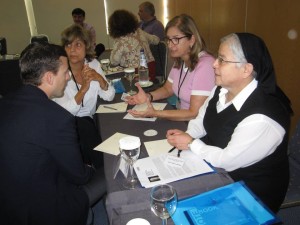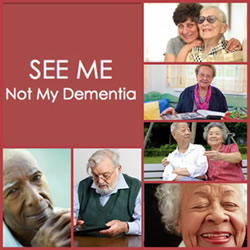IAHSA’s 11th Bi-Annual Conference was, by all accounts, a big success. With the theme of “Global Communities Coming Together”, over 800 delegates from around the world converged on Perth to tackle some of the thorniest issues in aged care and services and to commit to working together to solve them.
Katie Smith Sloan, Executive Director of IAHSA, and John Kelly, CEO of ACSA opened the conference, urging delegates to take advantage of the shared learning and the opportunity to connect with peers and colleagues from around the world. Sloan reminded delegates of our shared purpose – to ensure and enable the highest quality of life possible for those in their later life.
Dr. Robyn Stone kicked off the conference with the admonition that workforce challenges bring us together. “There is no demographic change in the history of the world that is more significant than ageing.” Because we are a service-enriched field, “our human capital will make or break us.” Later in the conference, the front line workforce was described as the “x factor” suggesting that it is our responsibility to invest in front line staff. Dr. Stone acknowledged that aged care is undervalued in the entire developed world and it is our responsibility to demonstrate how valuable a profession it is. To improve the experience of ageing, we need to improve recruitment to aged care; retention of employees; increase productivity and support family caregivers. There was considerable emphasis on skills for care, as social care will always be a people business.
Speakers throughout the conference spoke about the opportunities presented by ageing societies. Robert Lippiatt from Southern Pacific Consulting Group spoke about competition in the aged care marketplace and suggested that by 2020 the sector will look completely different. He urged providers to ask themselves, “what business am I in?” Glenn Rappensberg from Novita Children’s Services in Tasmania shared the framework for growth that has guided his organization: 1) defend and extend current core businesses; 2) build momentum around emerging new businesses (new ideas, build capacity) and 3) create options for future business – a longer term horizon.
The “nursing home of the future” in Aalbourg, Denmark was featured, designed to motivate movement, stimulate senses and foster inclusion. It serves as a living laboratory in Denmark for issues related to how people age. The dementia village in The Netherlands, Hogeway was also presented. The philosophy at the village is to create an environment where “residents can live as usual with lifestyle.” One of the pillars for quality of life at the village is to create favorable surroundings. Life at the village has a “normal human scale.”
A philosophy about humanity to others from South Africa inspired delegates. Ubuntu, meaning “I am what I am because of who we all are” drives a commitment to connectedness in aged care. Rayne Stroebel of Geratec and Sister Lucia, manager of St. Antoine’s in Wasbank, described ageing in South Africa. 2% of South Africans receive formal long term care. Of these, 98% are white. A staggering 97% of non-white caregivers have no water, no education and no electricity. Furthermore, among the nine indigenous languages in South Africa, there is no word for dementia. This is in sharp contrast to the richness of the developed world.
The promise of technology to address loneliness in old age was explored. Kevin Doughtey from the Centre for Usable Home Technologies in the U.K. referred to technologies to overcome “pajama paralysis” to foster engagement and interaction. Markus Leser from Curaviva in Switzerland spoke about technology as a tool to connect generations. He suggested that intergenerational language is a common language across the globe.
Meredith Wyse from HelpAge International suggested that IAHSA and HelpAge can lead the world in creating societies that are very inclusive of older people. The 28 workshops focused on the new mandate in Australia around consumer-directed care, operations and management, global communities, design, research and leadership.
IAHSA launched its Leadership Retreat, a 2 ½ day leadership development program for 24 “fellows” from around the world. Focused on leadership attributes, self awareness, and leadership experiences, the fellows were grateful for the experience, eager to practice what they learned and insistent on staying connected to their new peer group of fellow leaders.
The IAHSA Applied Research Forum, led by Julienne Meyer of City University of London, focused on research translated into practice around dementia care, with an emphasis on Australia. It was clear to all that there are wide gaps in research and in putting findings into practice.
The camaraderie, the opportunity to connect globally and the valuable content created a dynamic environment, enhanced by the energy and enthusiasm of our Australian partners and hosts from ACSA.
You need to login in order to like this post: click here





